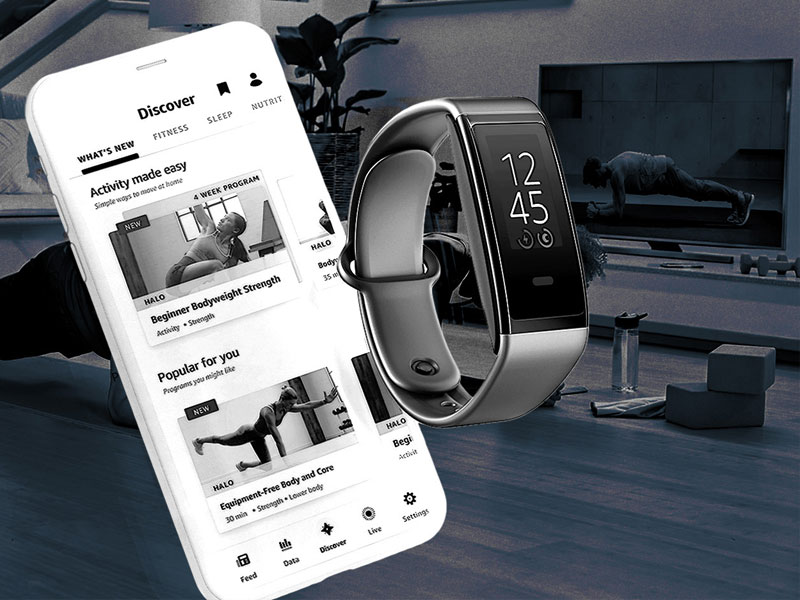Mark Zuckerberg says Meta wearables that read brain signals are coming soon
SOURCE: COINTELEGRAPH.COM
APR 19, 2024
Amazon wades deeper into wearables
SOURCE: FRONTOFFICESPORTS.COM
OCT 03, 2021

Big tech companies and incumbent startups alike are becoming increasingly infatuated with wearable technologies — namely wrist worn trackers.
On Tuesday, Amazon announced a plethora of new products and features related to its health and fitness services, including:
The Amazon reveal comes on heels of Apple announcing a partnership with UnitedHealthcare, Fitbit releasing the Charge 5 wearable, and Whoop launching its Whoop 4.0 after a $200 million capital raise at a $3.6 billion valuation.
Clearly, connected fitness and trackable biometric data is in high demand. In 2021 alone, funding for wearables and the “quantified self” has already reached the $2.9 billion mark with more than 260 companies receiving funding, according to Pitchbook.
We continue to see legitimate health applications for these consumer devices as health data moves “upstream” in the doctor-patient relationship and regulations on telemedicine integrations are simplified.
What about the $12 trillion elephant in the room? That’s right, healthcare.
Big tech, healthcare, and fitness are on a collision course as companies like Apple, Facebook, and now Amazon introduce products and partnerships that integrate health and wellness into their ecosystems.
These partnerships and initiatives, however, are nothing without hardware. In order to penetrate the healthcare market, tech companies need hardware that performs up to the standard of medical grade devices.
How are the various players in the space fairing in that battle? Let’s take a look:
Big tech likely has its sights set on full healthcare disruption, while incumbents like Whoop have the potential to own lucrative niches, such as quantifying performance, instead.
Apple and Amazon are leveraging their ability to create, curate, and distribute workout-related content. Whoop is focused on becoming ubiquitous with “fitness tracking.”
Apple has Apple Fitness+ and its bank of highly qualified trainers who, like Peloton trainers, utilize the platform as a means to engage with their audience. Amazon now has fitness tracking, fitness coaching, and nutritional coaching in its rapidly evolving Halo system. Whoop recently acquired PUSH — a velocity-based training app that lets users track weight lifting metrics — to further cement its position.
There’s a divide between the content platform play (Apple and Amazon) and the pure lifestyle brand play (Whoop). While the former seems to have stronger mass appeal, the latter has established a cult-like following.
This question is tricky because fitness wearables aren’t exactly a zero-sum game.
The three companies at the forefront of the space have fundamentally different end goals.
Amazon is focused on getting individuals into its Prime ecosystem at any cost. For this reason, they can price their hardware ($80) and software ($3.99 monthly subscription) significantly lower than an Apple Watch ($279) or Whoop monthly subscription ($30).
Apple already owns a lion’s share of the wearables market and has made healthcare and fitness a part of its growth thesis since as early as 2014. And then there’s Whoop — a software business disguised as a hardware product built for select high-performance individuals.
Ultimately, I believe that Apple wins out. Scale is scale, and very few can beat Apple in that game.
While the idea that another giant like Amazon could build out its own mini healthcare system is intriguing, wearables are consumer products that need to look and feel good. If Amazon is more concentrated on undercutting prices and using the Halo system to increase Prime memberships, its wearables won’t be able to compete with Apple’s ambitious design, market-leading UX and UI, and telemedicine infrastructure.
A decade ago, we didn’t know any of these companies would be at the forefront of health and fitness. Only time will tell how the category evolves in the near future.
LATEST NEWS
WHAT'S TRENDING


Data Science
5 Imaginative Data Science Projects That Can Make Your Portfolio Stand Out
OCT 05, 2022

SOURCE: COINTELEGRAPH.COM
APR 19, 2024
SOURCE: HTTPS://INTERESTINGENGINEERING.COM/
NOV 16, 2023
SOURCE: HTTPS://WWW.AZOSENSORS.COM/NEWS
AUG 28, 2023
SOURCE: WWW.WHATGADGET.NET
JUL 11, 2023
SOURCE: HTTPS://WWW.THEHINDU.COM/SCI-TECH/TECHNOLOGY/INDIAS-WEARABLE-MARKET-GREW-47-IN-2022-BOAT-MAINTAINS-LEAD-REPORT/ARTICLE66493121.ECE
JUN 30, 2023